April 18, 2019
Dry Creek Bed Design + Native Plant Design Lake Buchanan
Sunday’s my time to garden but these days it’s hard to stick to the ever-growing chores.
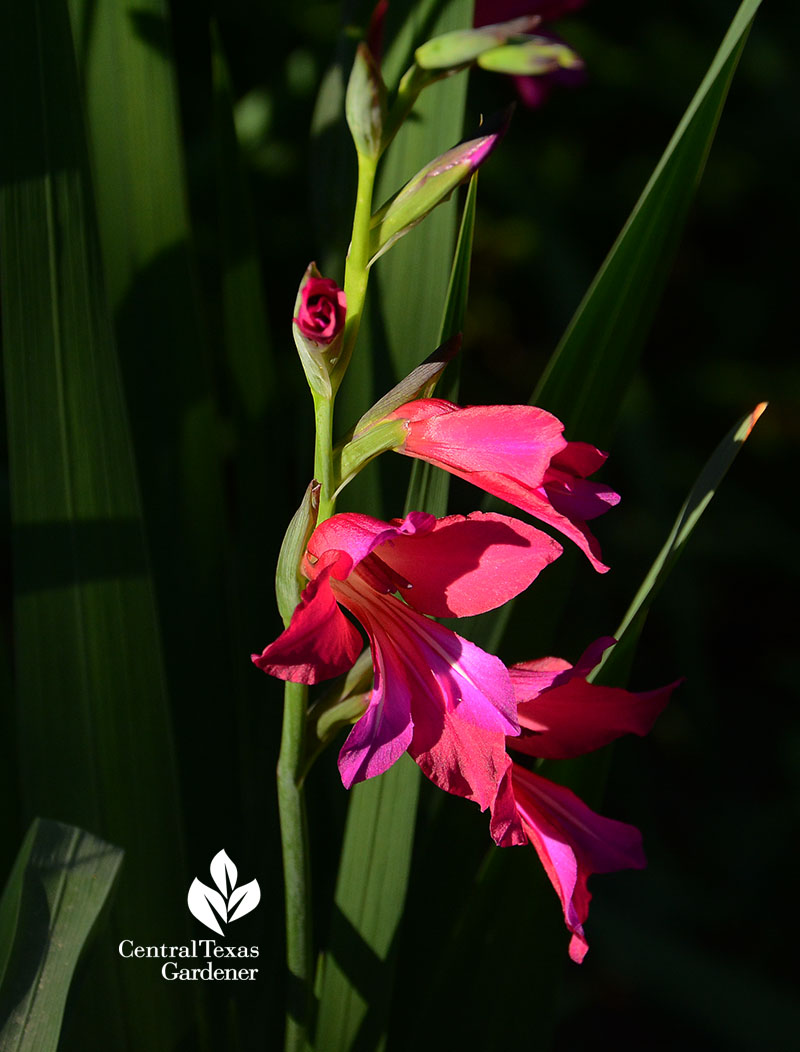 Although the weeds are calling me, so are the flowers, like my long-established, swoon-worthy Byzantine gladiolus.
Although the weeds are calling me, so are the flowers, like my long-established, swoon-worthy Byzantine gladiolus.
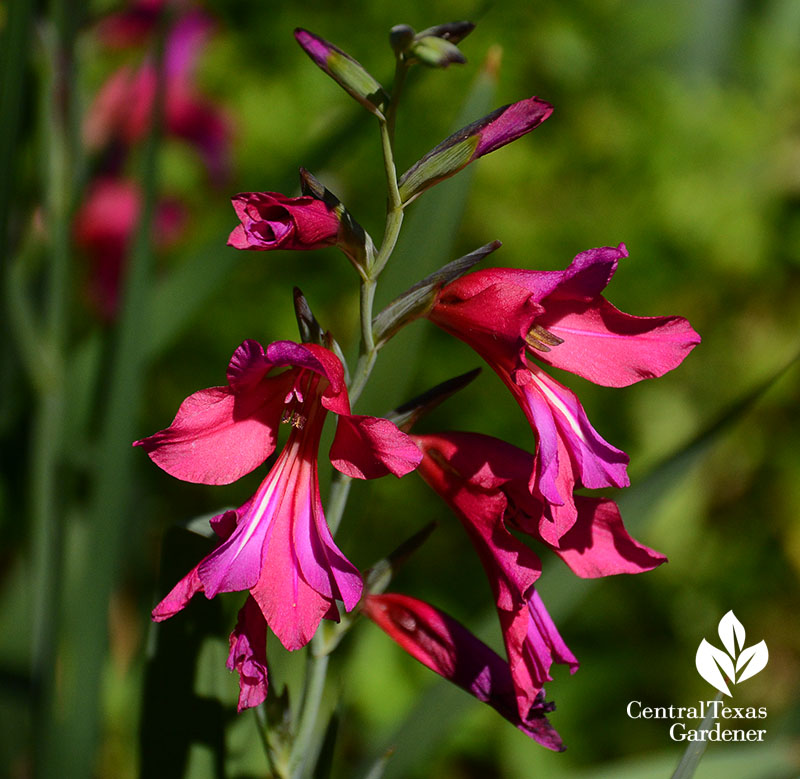
Newe Ya’ar sage—the only sage that’s worked for me—is such a bee flurry right now that I delayed my trip to the recycling bin for a quick camera detour. (I did then pluck a few weeds before I finally made it to recycling.)
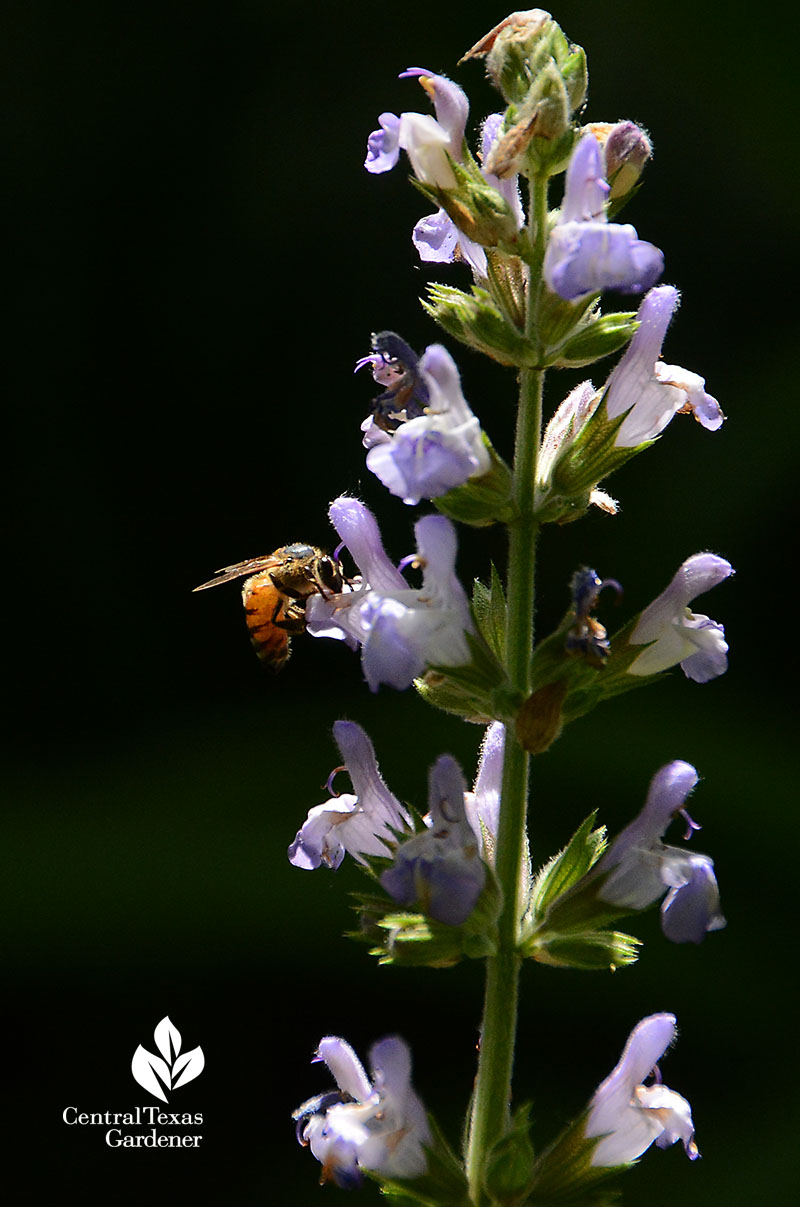
I’m also shoveling compost out of my freestyle piles behind the shed, avoiding the energetic leaves of bonus potatoes. To be more organized about composting, John shows how to make an easy, inexpensive frame. This is just a demo version: you want to do something at least 4’ tall.
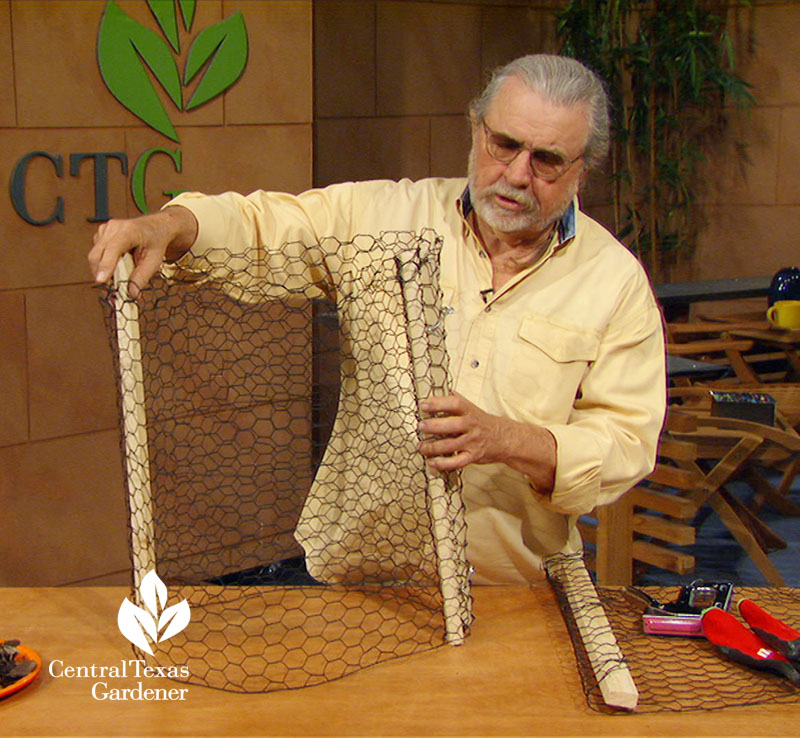
The clever deal is that once the compost is ready, unlatch and move your frame to another spot to deposit vegetable and weed-free garden discards. (If you didn’t get your weeds before they formed seeds, let the city have them for really hot piles or throw away.)
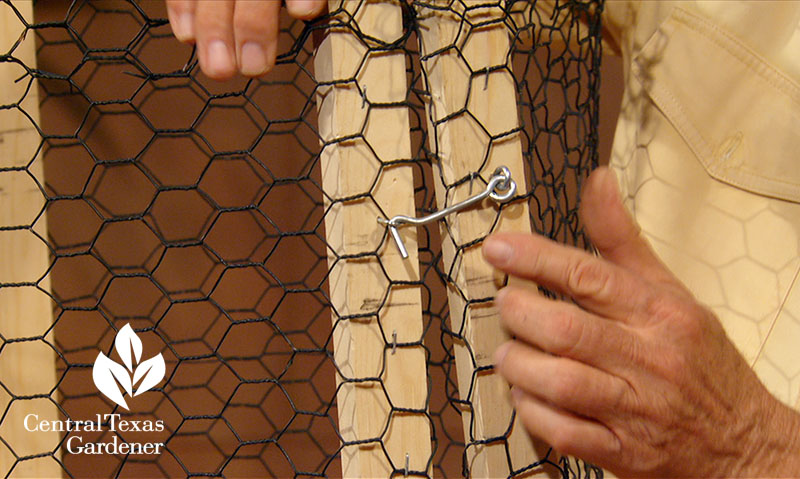
I can also see as this a quick way to deflect cats around plants or critters around the base of new trees. Watch now!
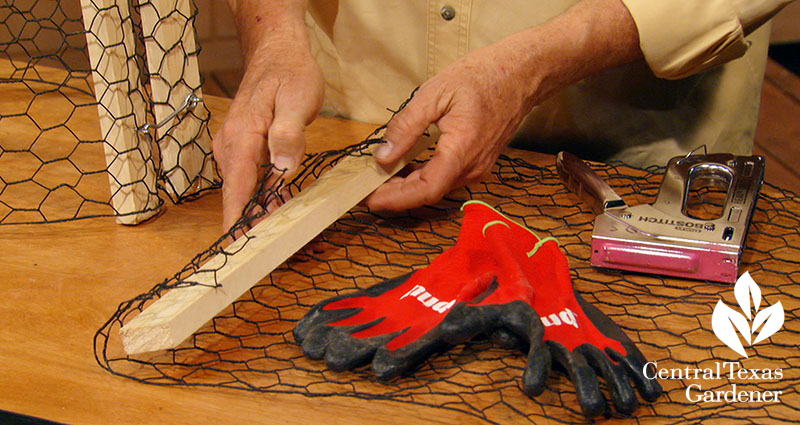
In Dripping Springs, Deb Wilson, former blogger at Austin Agrodulce, took along her parsley when she moved from Rollingwood last year. Not only does she like it for the kitchen, it’s a larval host for swallowtail butterflies, including this Eastern Black Swallowtail that over-wintered as a chrysalis in the parsley. SO, if you see caterpillars on your parsley and cilantro right now, leave them be!
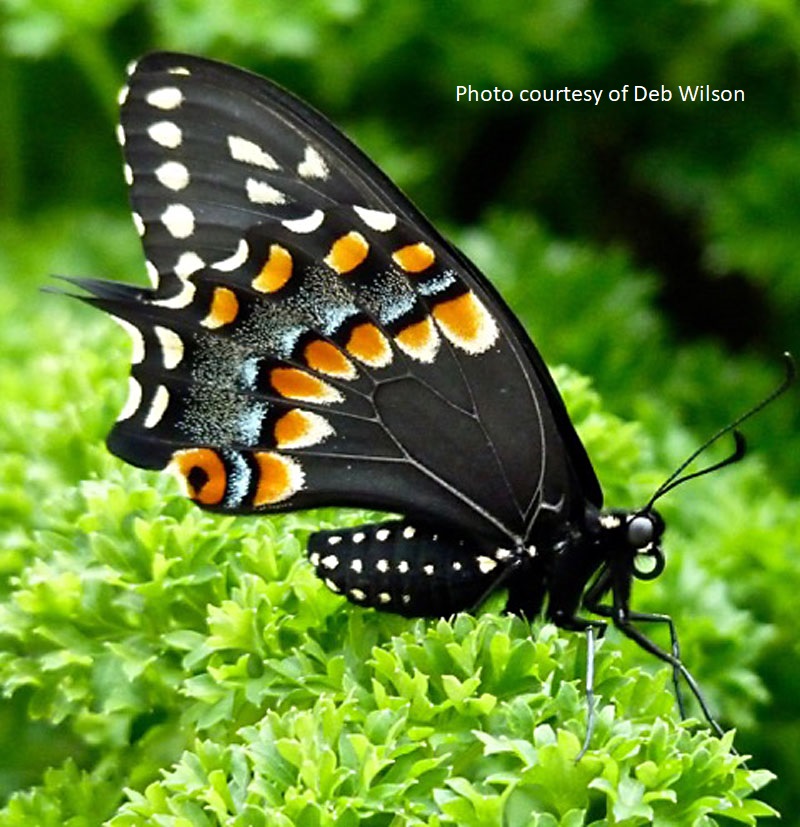
We all have questions about how much to water plants. Well, one size doesn’t fit all. It depends on type of plant and how established it is, your soil, and type of light. Get Daphne’s full answer.
As we know already, when it rains in Central Texas, it REALLY pours. One way to control water puddling or even flooding is with dry creek beds. This week, garden designer Leah Churner lays out best practices, mistakes to avoid, and DIY tips.
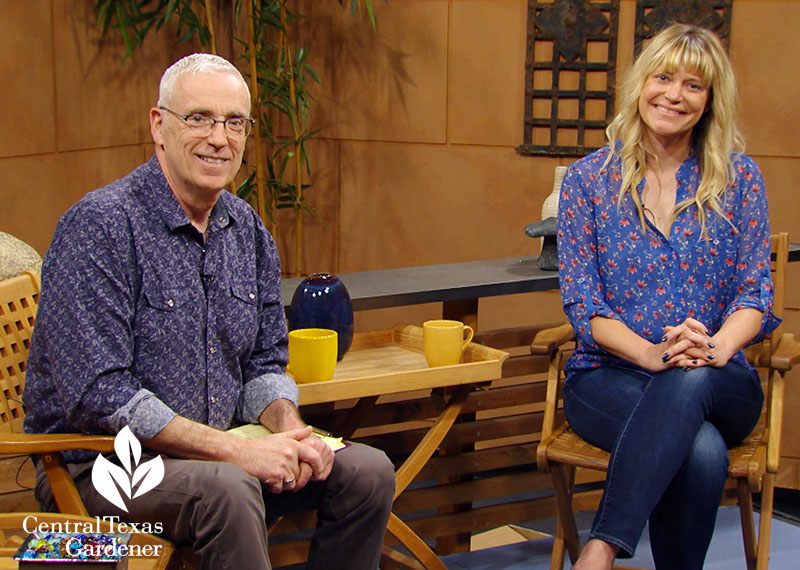
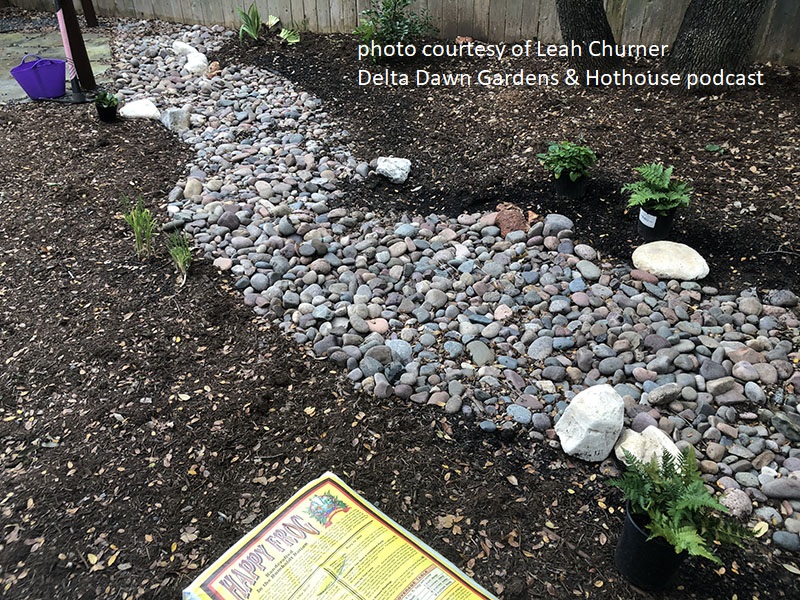
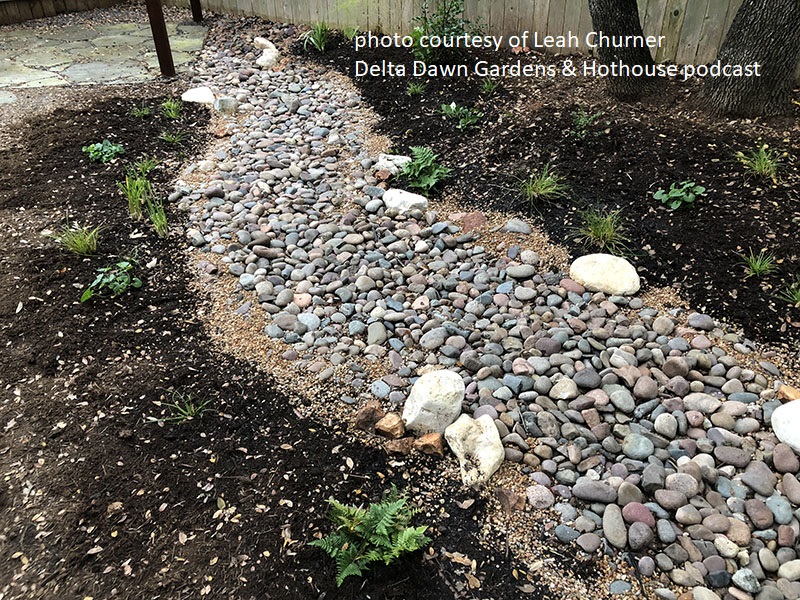
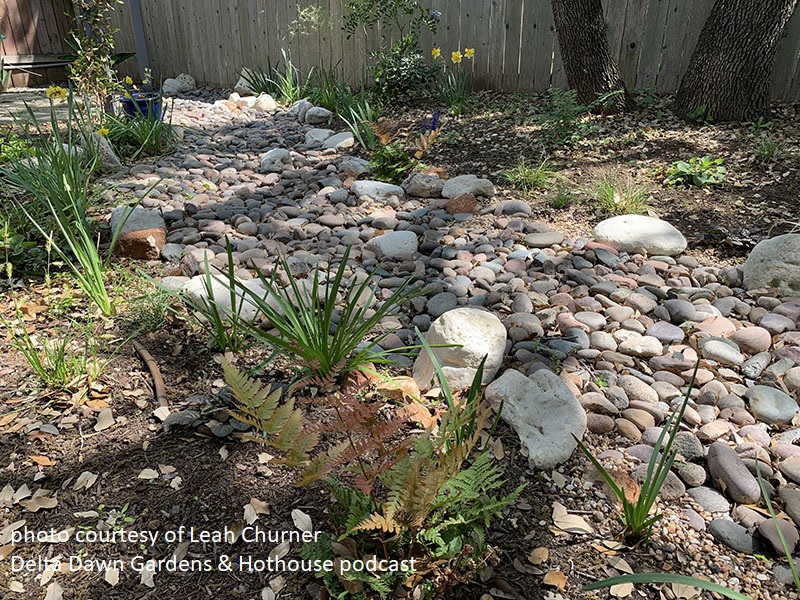
Watch now! And check out Leah’s thoughtful podcast, Hothouse, where she’ll be taking a close look at water issues in upcoming segments.
On tour: In Burnet, Pamela and Jimmy Holcomb controlled runoff from a steep road and restored indigenous plants on a sandstone cliff above their Lake Buchanan waterfront.
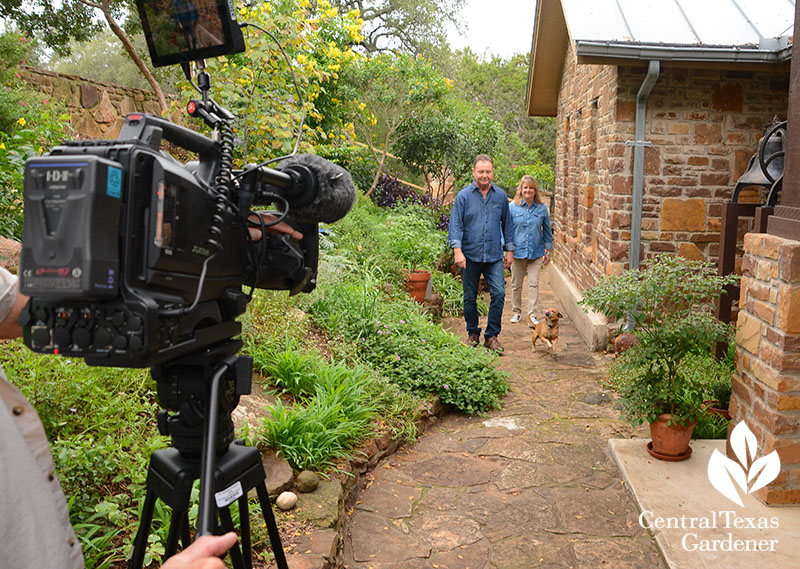
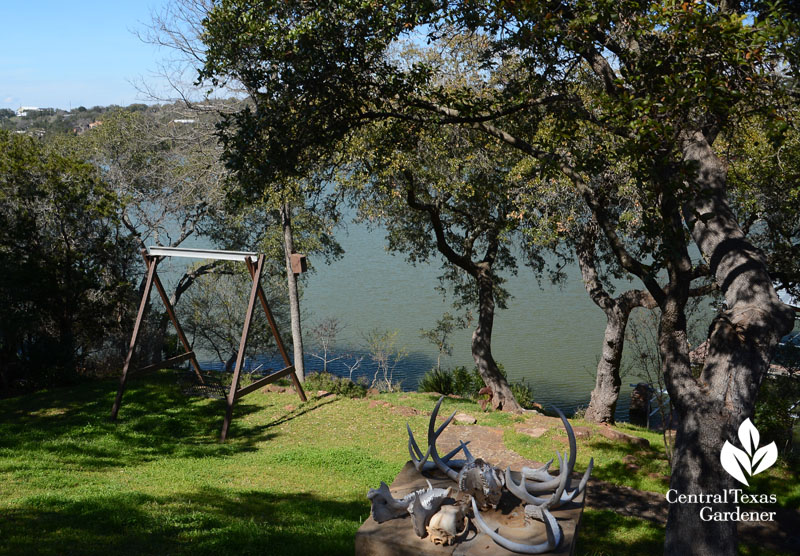
Our original date in October was delayed by the floods. It was misting, but calm, when we arrived and fell under the lake’s soothing spell.
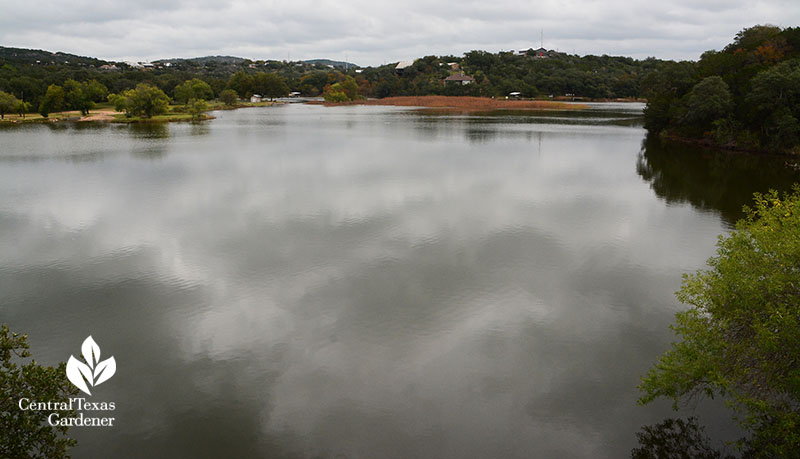
Since their house is tucked below a steep grade beyond a winding road, they’ve come up with various ways to deflect heavy rainfall. One is a sturdy sandstone retaining wall.
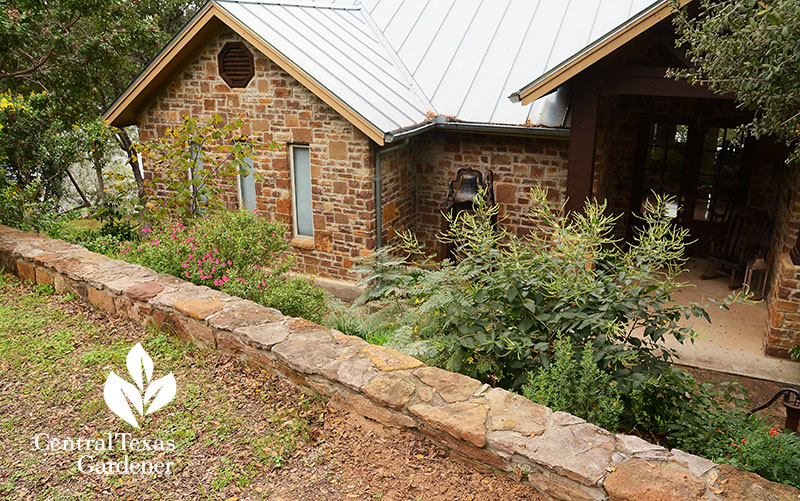
French drains run under the driveway.
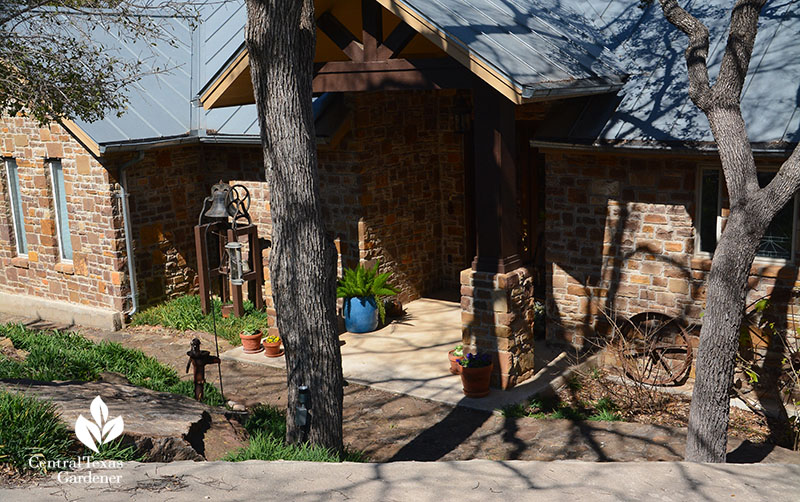
On their sandstone pocket between Hill County limestone and granite, Jimmy’s first job was clearing some of the mountain cedar to give breathing room to the oaks, cedar elms and other indigenous trees, like Texas persimmon.
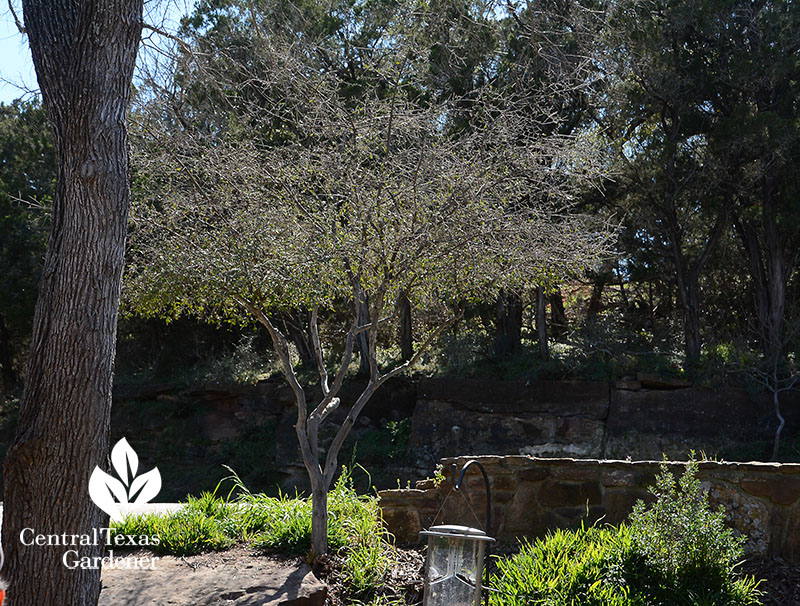
To restore existing native plants for wildlife, and make way for his additions, Jimmy removed lots of invasive exotic undergrowth. He does it all by hand.
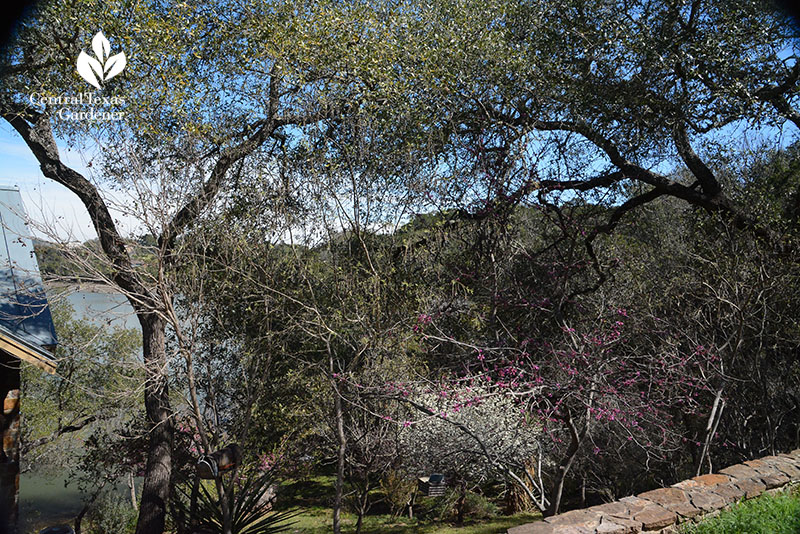
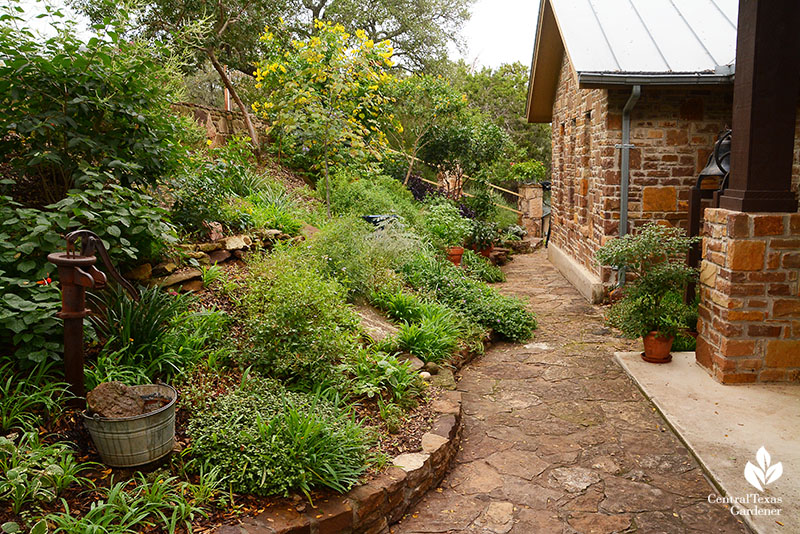
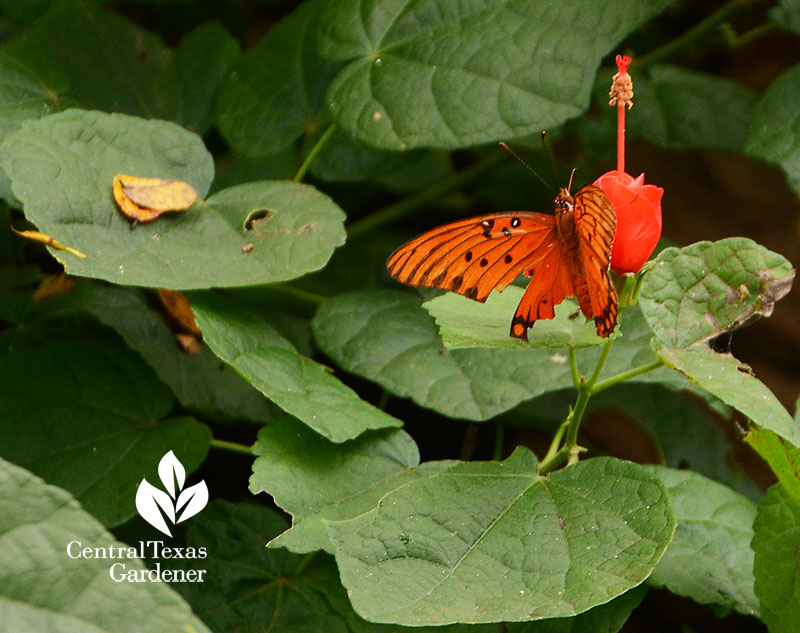
They want no toxic chemicals impacting the wildlife that live on the lake.

Natural outcroppings define the tall, narrow rock wall in front. To add natural-looking ledges of pocket plants, Jimmy used sandstone he’d unearthed.
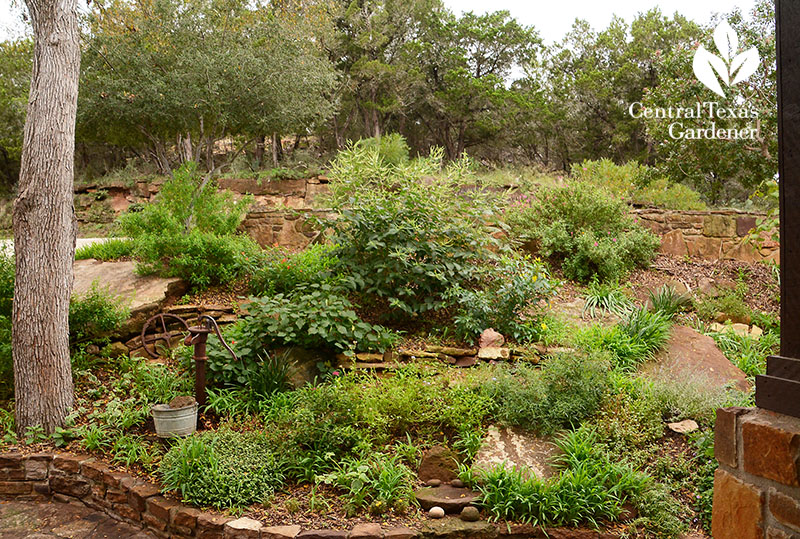
After digging a hole, he’d make the ledge and then backfill with soil and compost. He makes his own compost, thanks to Burnet school district’s free kitchen discards—eagerly picked up by gardeners and to feed goats!
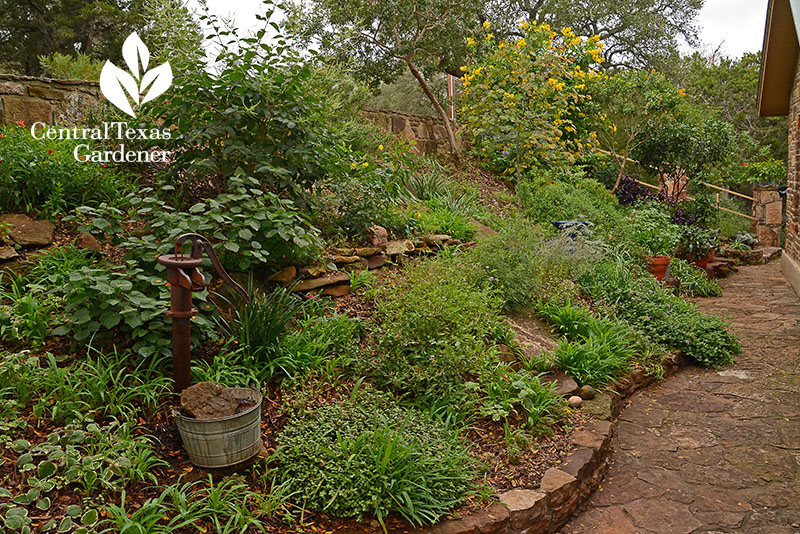
Jimmy nurtures the native plants that re-emerged, dividing them and planting their seeds.
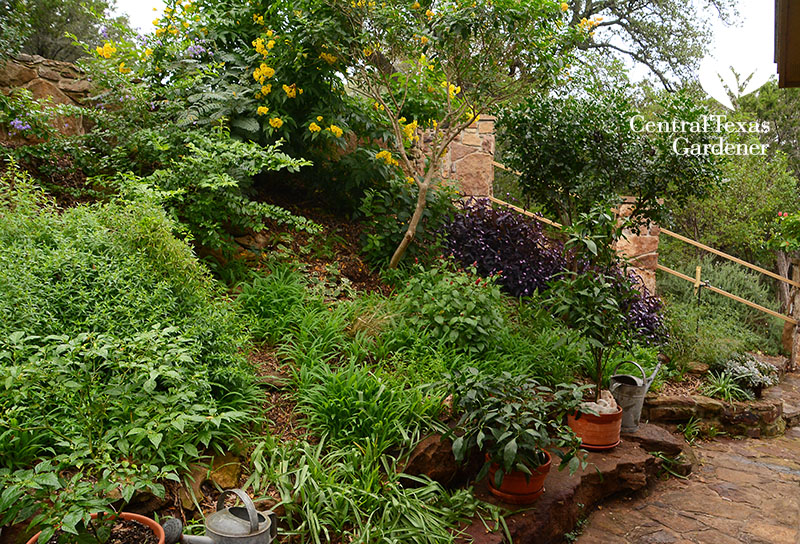
A gracious sandstone staircase leads to the slope above the lake.
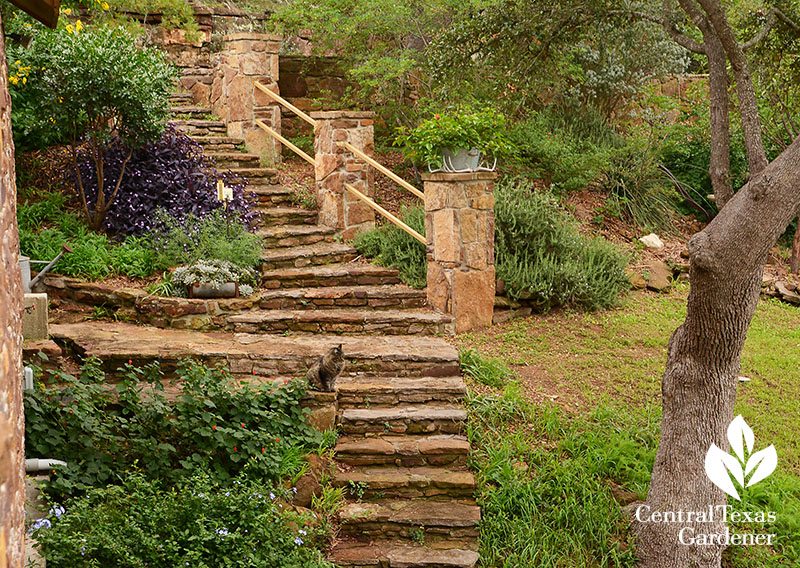
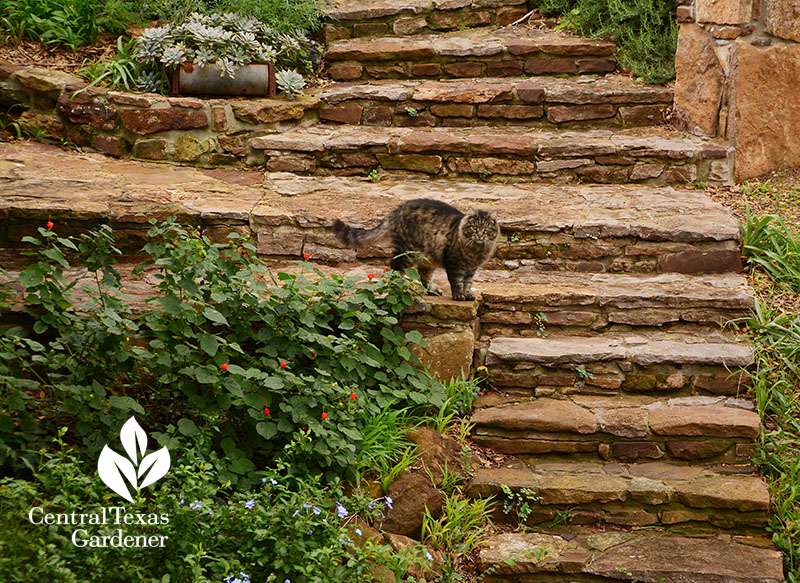
Along the back of the house, a narrow deck traverses different lake perspectives.
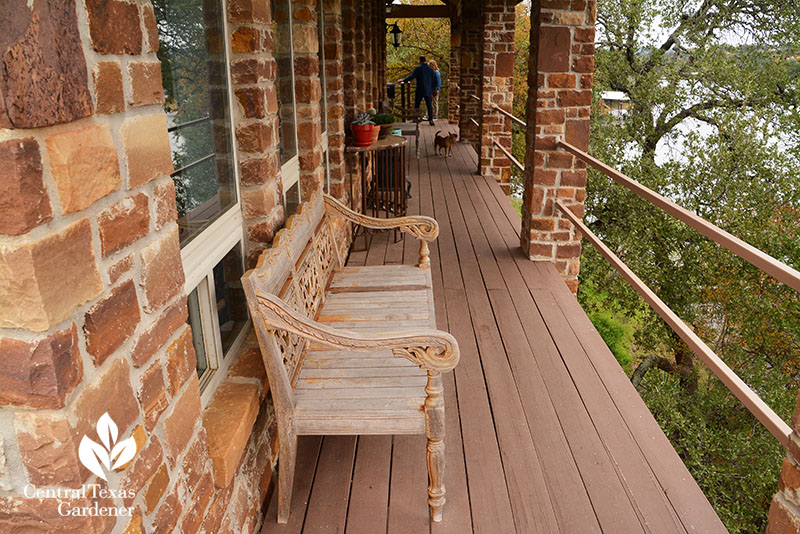
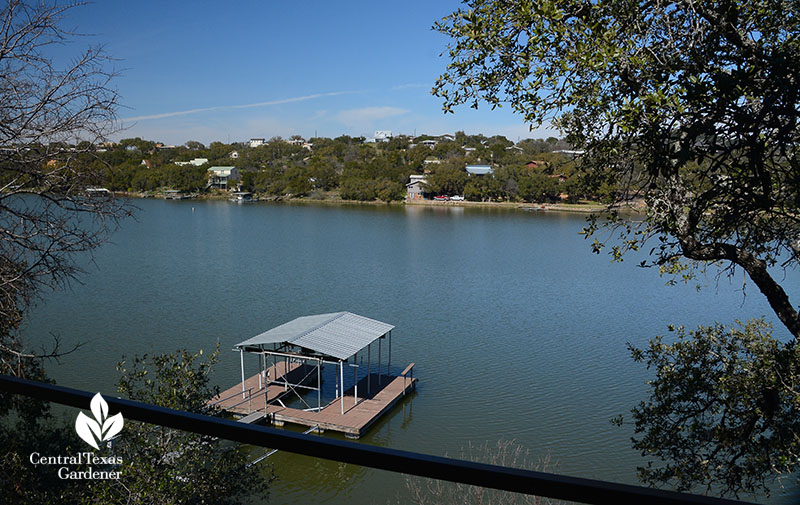
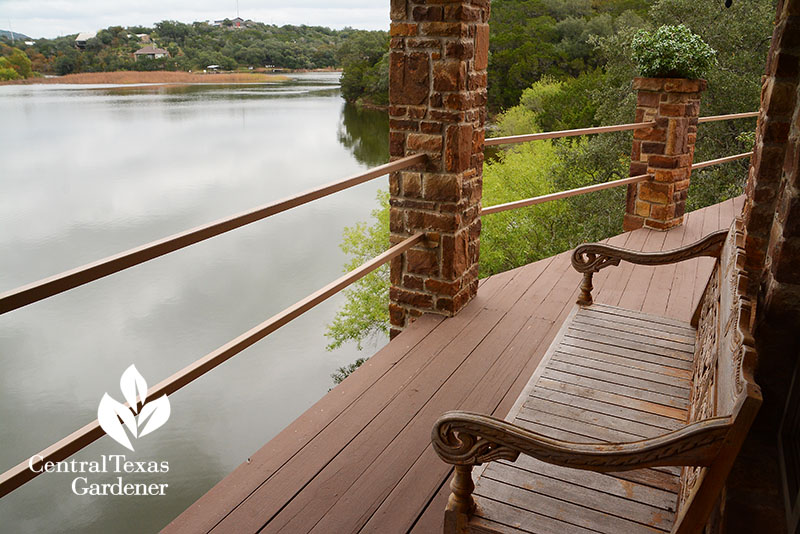
From the patio, they can watch the lake or the wildlife on the side of the property, including seasonally nesting wood ducks. They lucked into an old Singer sewing machine base for the table.
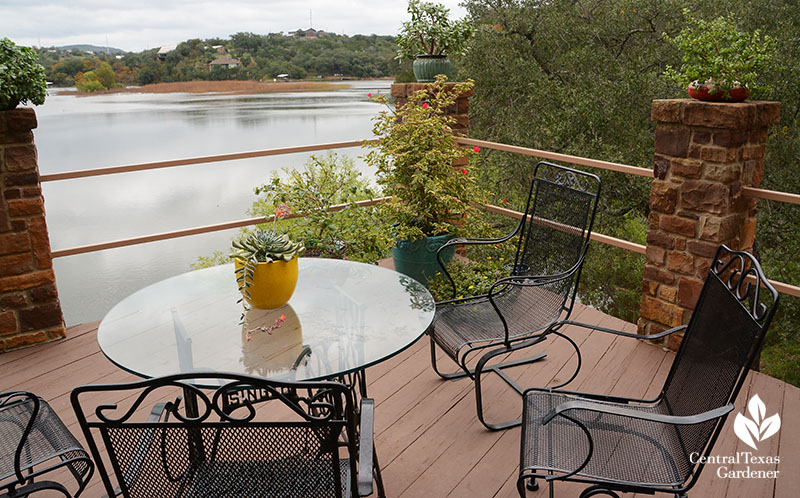
Sentimental family treasures include a tiled table hand-painted by Pamela’s grandmother.
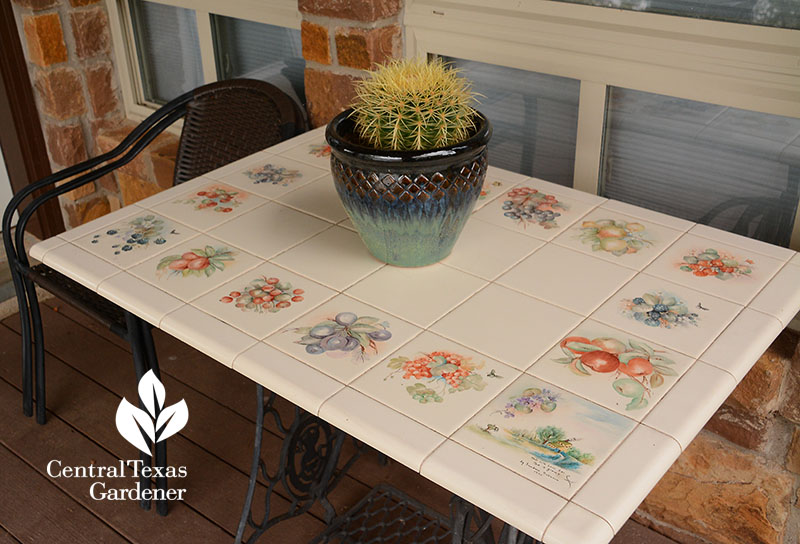
And an old bell tower from Jimmy’s uncle.
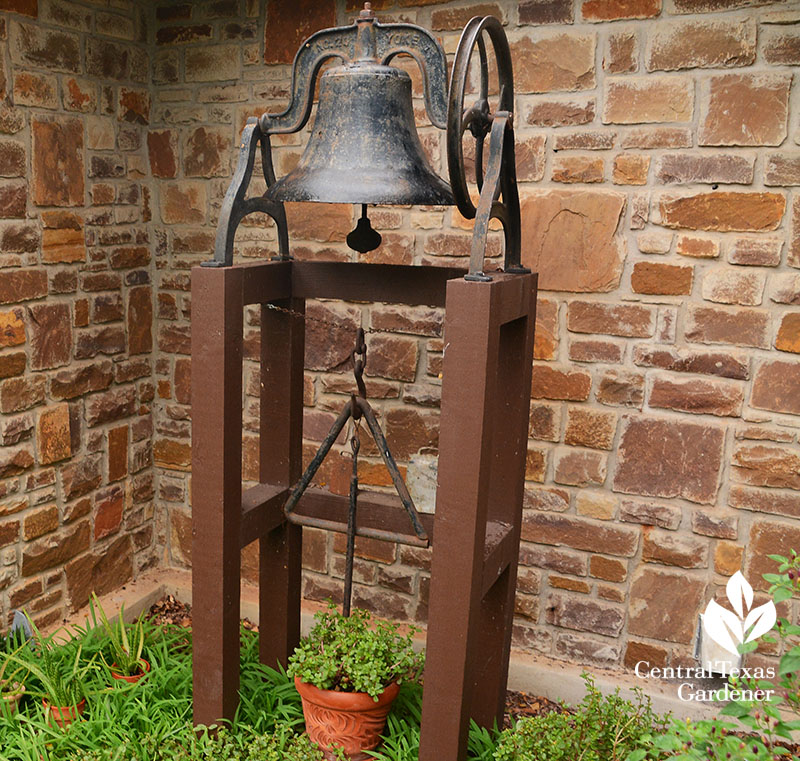
Others were just lucky finds around town, like a wagon wheel that takes the spotlight when American beautyberry goes dormant in winter. The yellow peppers move into warmth.
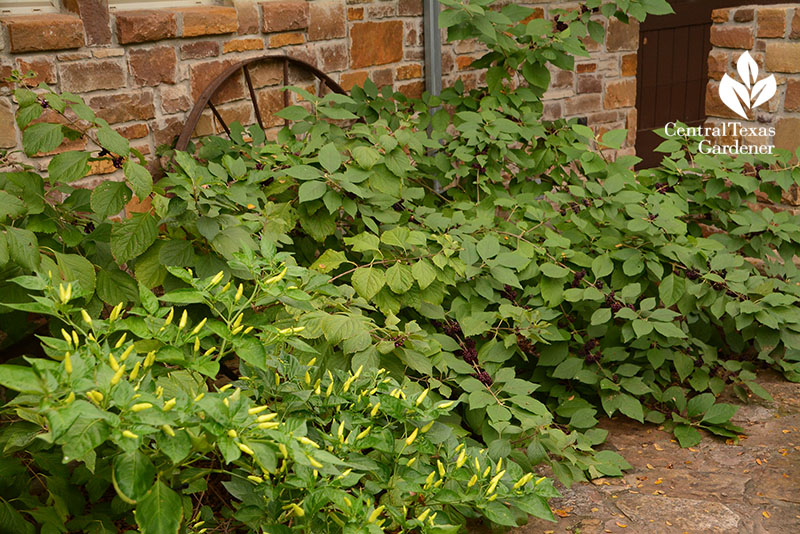
Jimmy turned an ancient pump handle into a recirculating fountain.
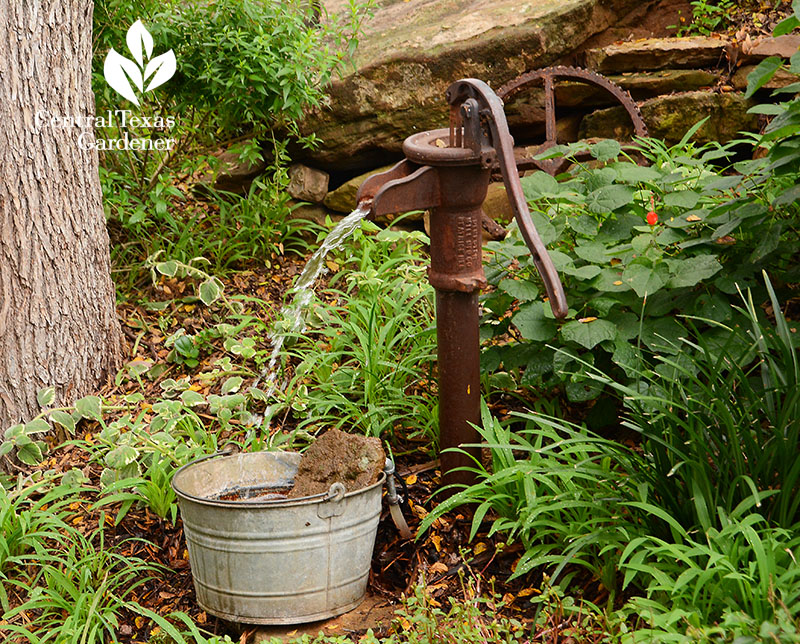
Not only does Jimmy nurture their land, he watches out for the native plants across the street, including ferns clinging to the rocky outcrops.
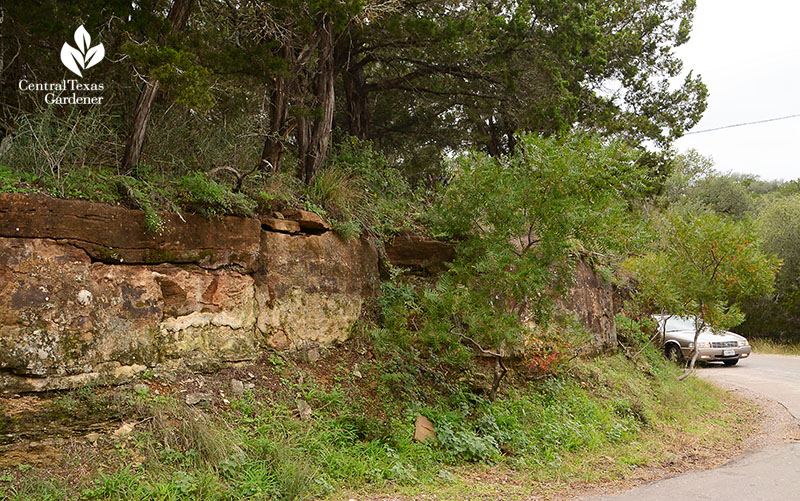
There’s a lot to love about Pamela and Jimmy, but especially their philosophy to enjoy all the wildlife—even the beavers and armadillos that “modify” the garden now and then.
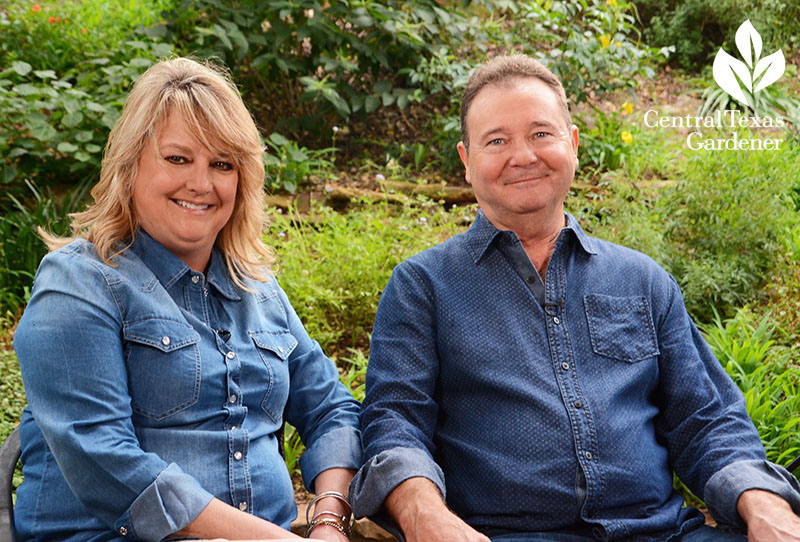
Meet them now and hear their story!
Thanks for stopping by! And hey, if you’re on Instagram, let’s connect at @ctglinda. Until next week, Linda

